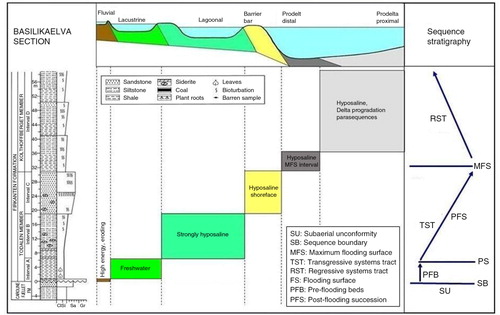Figures & data
Fig. 1 (a) Location of Spitsbergen on the Svalbard Archipelago. (b) Geological map of central and southern Spitsbergen with position of the four studied localities. (c) Stratigraphic outline of the Spitsbergen Paleogene succession with lithological column and facies trends in a framework of transgressive–regressive (T–R) sequences.
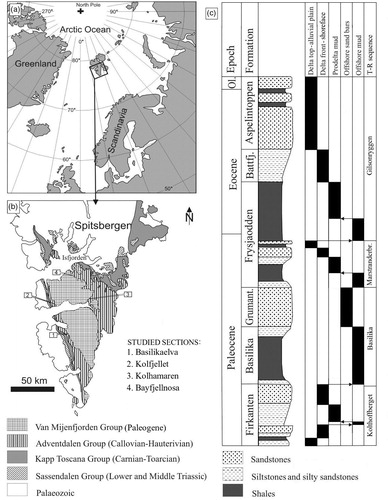
Fig. 2 Outline of the stratigraphy and depositional conditions of the Firkanten, Basilika and Grumantbyen formations in the Paleogene Central Basin of Spitsbergen along a south-west–north-east transect (modified from Steel et al. Citation1981; Nagy Citation2005).
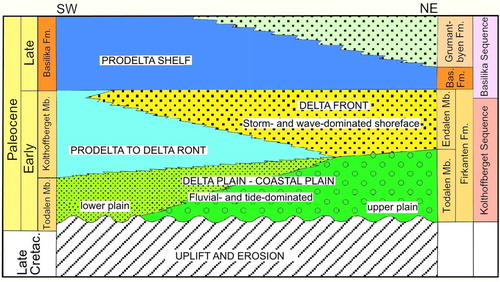
Fig. 3 Lithological column of the Firkanten Formation in the Basilikaelva section, with field photographs of typical features.
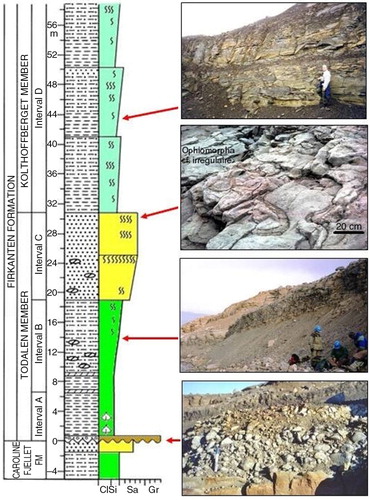
Fig. 4 Sedimentary features of the Firkanten Formation and overlying units. (a) Middle and upper part of the Firkanten Formation, Kolfjellet section. (b) Wave-generated ripples on a bedding plane near the top of unit C, Basilikaelva section. (c) The Todalen and Endalen members of the Firkanten Formation, and the overlying Basilika and Grumantbyen formations, Bayfjellnosa section. (d) Coarsening-upward sandstone interval forming the lover and middle part of unit C, Basilikaelva section.

Fig. 5 Sedimentary and biotic features of the Firkanten Formation. (a) Current-generated ripples and bivalve impressions on a bedding plane near the top of unit C, Basilikaelva section. (b) Dense population of Ophiomorpha cf. nodosa shafts cut horizontally by a bedding plane in unit C, Basilikaelva section. (c) Sandstone with low-angle parallel lamination indicating foreshore deposition at the top of unit C, Kolfjellet section. (d) Coal seam in unit A, Kolfjellet section.
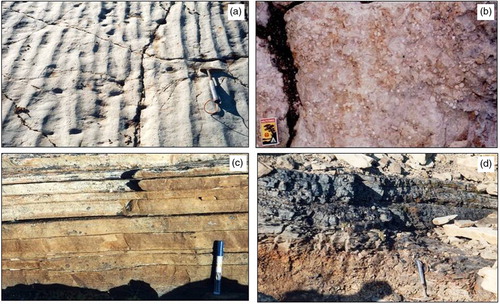
Fig. 6 Field photographs of Ophiomorpha cf. nodosa from the Firkanten Formation. (a) Sparsely-spaced shafts from the middle part of unit C, Basilikaelva section. (b, d) Dense population of shafts in the upper part of unit C, Basilikaelva section. (c) Sparsely scattered shafts in a sandstone bed of the Todalen Member, Bayfjellnosa section.
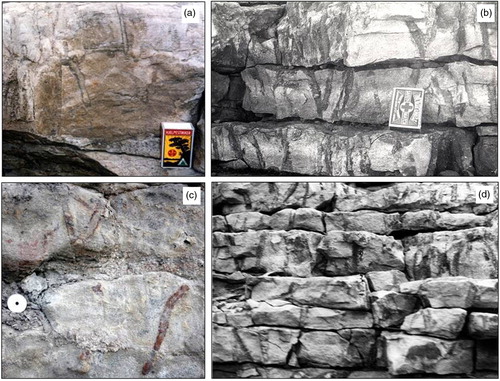
Fig. 7 Field photographs of Ophiomorpha cf. irregulaire parallel to a bedding plane 60 cm below the top of unit C, Basilikaelva section. (a) Single sinuous tunnel with upwards-bent base of constricted subvertical shaft at the left hand end. (b, c, d) Coiled and somewhat irregularly bending tunnels showing an uneven, low bumpy surface and dark lining at the contact between the tunnel and surrounding sediment.

Fig. 8 The Firkanten Formation in the Basilikaelva section with typical fossils, foraminiferal diversity index and succession of depositional facies changes in a transgressive–regressive sequence stratigraphic framework. The Ophiomorpha burrows are observed in the barrier bar sandstones (Unit C), while low-diversity agglutinated foraminiferal assemblages occur in the shales below and above. (Scale bars with foraminifera 250 µm.)
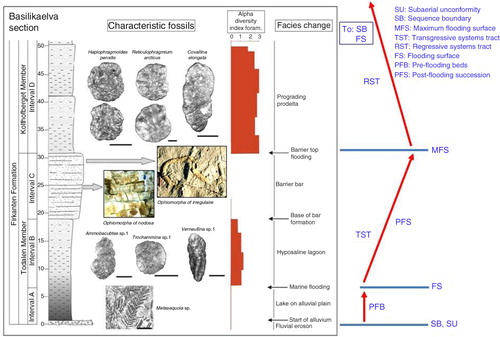
Fig. 9 Depth to distance diagram outlining facies succession of the Firkanten Formation in the Basilikaelva section portrayed in the framework of the Kolthoffberget transgressive–regressive sequence. The transgression advanced from south-west to north-east.
